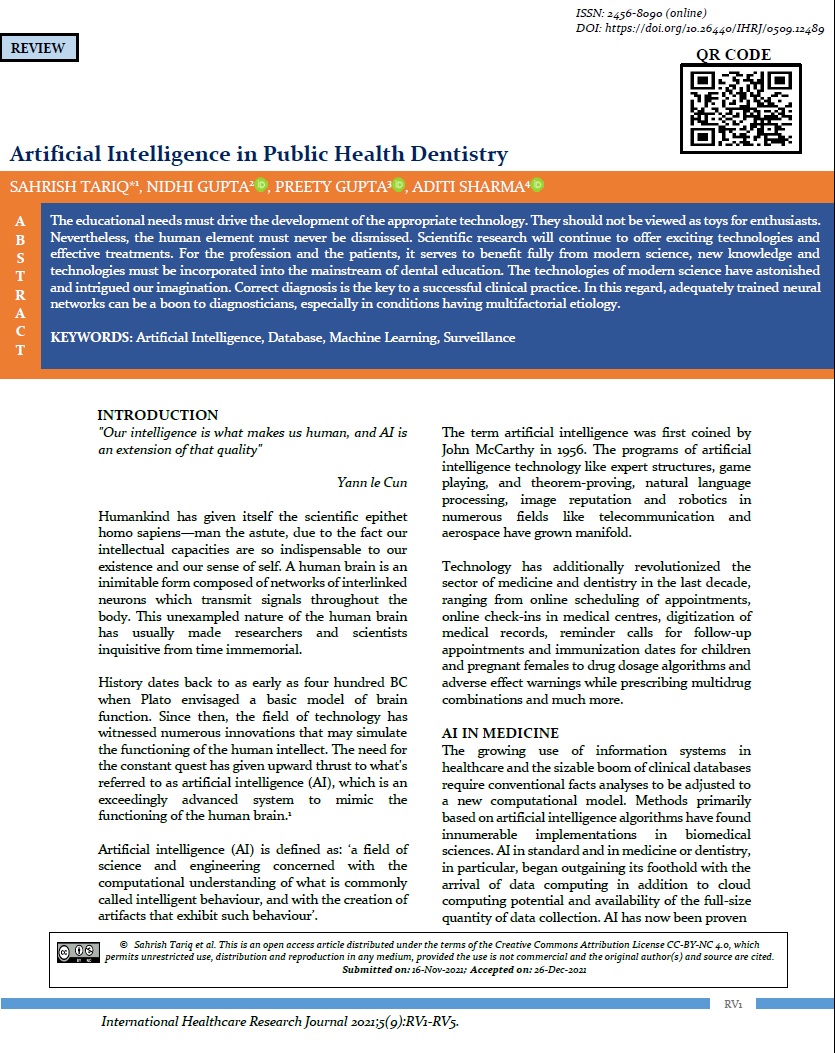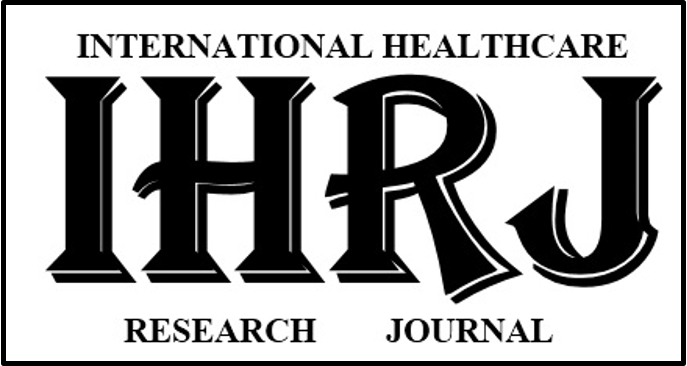Artificial Intelligence in Public Health Dentistry
Abstract
The educational needs must drive the development of the appropriate technology”. They should not be viewed as toys for enthusiasts. Nevertheless, the human element must never be dismissed. Scientific research will continue to offer exciting technologies and effective treatments. For the profession and the patients, it serves to benefit fully from modern science, new knowledge and technologies must be incorporated into the mainstream of dental education. The technologies of modern science have astonished and intrigued our imagination. Correct diagnosis is the key to a successful clinical practice. In this regard, adequately trained neural networks can be a boon to diagnosticians, especially in conditions having multifactorial etiology.
Downloads
References
Turing AM. Computing machinery and intelligence. Mind 1950;59:433–60.
Ramesh AN, Kambhampati C, Monson JRT, Drew PJ. Artificial intelligence in medicine. Annals of the Royal College of Surgeons of England 2004;86(5): 334–8. https://doi.org/10.1308/147870804290
Deshmukh SV. Artificial intelligence in dentistry. J Int Clin Dent Res Organ. 2018;10:47-8. https://doi.org/10.4103/jicdro.jicdro_17_18
Buchanan JA. Experience with virtual reality-based technology in teaching restorative dental procedures. J Dent Educ. 2004;68(12):1258-65.
Kikuchi H, IkedaM, Araki K, Evaluation of a Virtual Reality Simulation System for Porcelain Fused to Metal Crown Preparation at Tokyo Medical and Dental University. Journal of Dental Education 2013;77:782-92.
Joda T. Health Data in Dentistry: An Attempt to Master the Digital Challenge. Public Health Genomics 2019;22:1–7. https://doi.org/10.1159/000501643
Cooper GF, Dash D, Levander J, Wong W-K, Hogan W, Wagner M. Bayesian Biosurveillance of Disease Outbreaks. Proc. 20th Conf. Uncertainty in Artificial Intelligence;2004,94–103.
Kulldorff, M, Mostashari F, Duczmal L, Katherine Yih W, Kleinman K, Platt R. Multivariate scan statistics for disease surveillance. Statist Med. 2007;26:1824-33. https://doi.org/10.1002/sim.2818.

Copyright (c) 2021 Sahrish Tariq et al.

This work is licensed under a Creative Commons Attribution-NonCommercial 4.0 International License.


